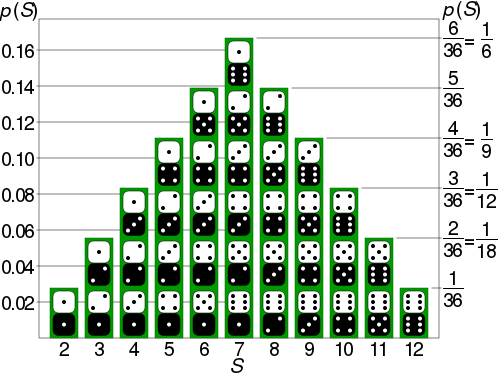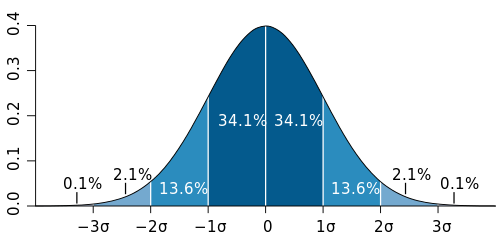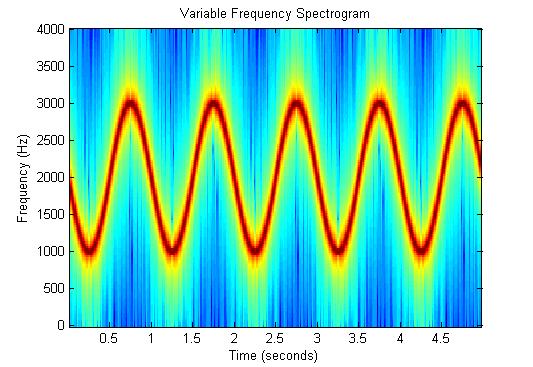Let us correct my previous post, it is badly written:
Here is the some wrong part:
----------
doronshadmi said:
As a result you
The Man said:
"have clearly stated previously that the "Collapsing wavefunctions?” result in a more defined peak in the probability distribution and that any variable can be “Indeterminate”.
which is a complete nonsense simply because the pics are indeterminate only under the parallel-ism of superposition of ids, as seen if the two silts are opened (actually what is considered as a single strict photon is interfered with itself, such that its id is under superposition, or in other words, the single photon has no strict id when the two silts are opened).
Enter it into your mind: when both silts are opened the wavefunctions is not collapsed (there is a superposition of ids).
The wavefunction is collapsed (there is no superposition of ids), if a single silt is opened.
In other words: the "
Collapsing wavefunctions?” result in a
less defined peak in the probability distribution and that any variable can be “determinate” (there is no superposition of ids).
-------
Here is the correction:
--------------
As a result you
The Man said:
"have clearly stated previously that the "Collapsing wavefunctions?” result in a more defined peak in the probability distribution and that any variable can be “Indeterminate”.
which is a complete nonsense simply because "a more defined peak in the probability distribution" (there is a clear single peak) is exactly the result of one open silt, which is defiantly under superposition
collapse, or in other words, the ids are strict.
Enter it into your mind: when both silts are opened the wavefunctions is not collapsed (there is a superposition of ids).
The wavefunction is collapsed (there is no superposition of ids), if a single silt is opened (there is a clear single peak).
In other words: the "
Collapsing wavefunctions?” result in a more defined peak in the probability distribution and that any variable can be “
determinate” (there is no superposition of ids since there is a clear single peak).
--------------
Here is the result of a single silt pattern experiment:
[qimg]http://upload.wikimedia.org/wikipedia/commons/7/70/Single_slit_intensity_distribution.png[/qimg]
[qimg]http://hyperphysics.phy-astr.gsu.edu/hbase/phyopt/imgpho/muls1.gif[/qimg]
Here is the result of a double silt pattern experiment:
[qimg]http://sciencevault.net/11hscphys/82worldcommunicates/pics/822%20Diffraction%20pattern.png[/qimg]
[qimg]http://hyperphysics.phy-astr.gsu.edu/hbase/phyopt/imgpho/mulsi2.gif[/qimg]
As clearly can be seen, a single silt pattern has a clear single peak (it is local and there is no superposition of ids), where a double silt pattern does not have a clear single peak (it is non-local and there is superposition of ids).
------------------------------------------------------------------
Also let us correct my wrong criticism about the following wiki page:
Again from the Uncertainty principle
http://en.wikipedia.org/wiki/Uncertainty_principle
In quantum physics, a particle is described by a wave packet, which gives rise to this phenomenon. Consider the measurement of the absolute position of a particle. It could be anywhere the particle's wave packet has non-zero amplitude, meaning the position is uncertain – it could be almost anywhere along the wave packet. To obtain an accurate reading of position, this wave packet must be 'compressed' as much as possible, meaning it must be made up of increasing numbers of sine waves added together. The momentum of the particle is proportional to the wavelength of one of these waves, but it could be any of them. So a more accurate position measurement–by adding together more waves–means the momentum measurement becomes less accurate (and vice versa).
*bolding added
If we increasing the numbers of sine waves of a given wave packet that are added together (they are 'compressed' as much as possible) we get the single silt pattern, for example:
which is definitely local
AND strict (the measurement of position is more accurate).
If we decreasing the numbers of sine waves of a given wave packet that are added together (they are not 'compressed' as much as possible) we get the two open silts pattern, for example:
which is definitely non-local
AND non-strict (the measurement of position is less accurate).
In other words, The Man does not understand the Uncertainty principle, and how it is related to the Double silts experiment.
----------------------------------
Here is the correction of the first part of the previous post:
The Man said:
Please learn the difference between ‘classical’ and ‘quantum’ applications as your assertions above demonstrate that you, as yet, have not. To try to put it succinctly for you ‘classical’ applications deal with continuous values while ‘quantum’ applications involve discrete values. By actually: just making up self-contradictory crap won’t get you anywhere or help you to learn anything Doron.
Please learn the difference between uncertain ids under superposition, and certain ids under superposition collapse
of the variables themselves (no matter if continuous or discrete values are involved with the given variables).
For example (
http://en.wikipedia.org/wiki/Probability_distribution ):
is an example of discrete and strict ids.
is an example of continuous and strict ids.
Please pay attention that both cases have the same pattern of one open silt:
You will not find superposition of ids in any paper that deals only with strict variables (which are variables under superposition collapse), exactly because papers that are based only on superposition collapse are written by scholars that use only their brain's left-hemisphere.
Once again, the power of the continuum is actually a property of at least 1-dimensional space, and no amount of 0-dimensional spaces actually reaches that power.
This fact is rigorously and immediately understood by using both brain's hemispheres, where the right-hemisphere provides the spatial\parallel abilities of the brain and the left hemisphere provides that verbal\serial\step-by-step(analytic) abilities of the brain, under a one comprehensive framework.
Your left-hemisphere-only reasoning can't get the actual power of the continuum and can't get the difference between superposition of ids and parallel-ism, and superposition collapse and serial-ism (no matter if it is continuous or discrete) .

 please.
please.






